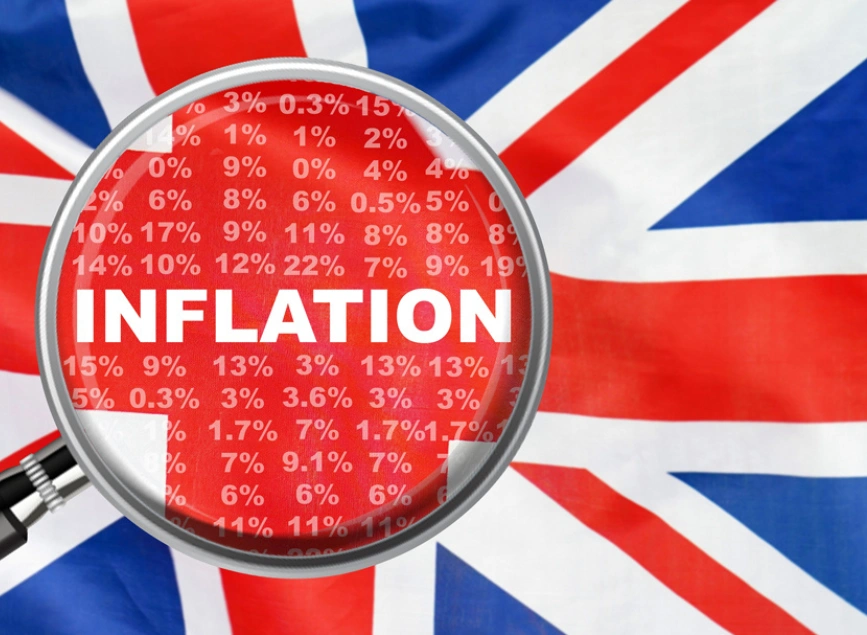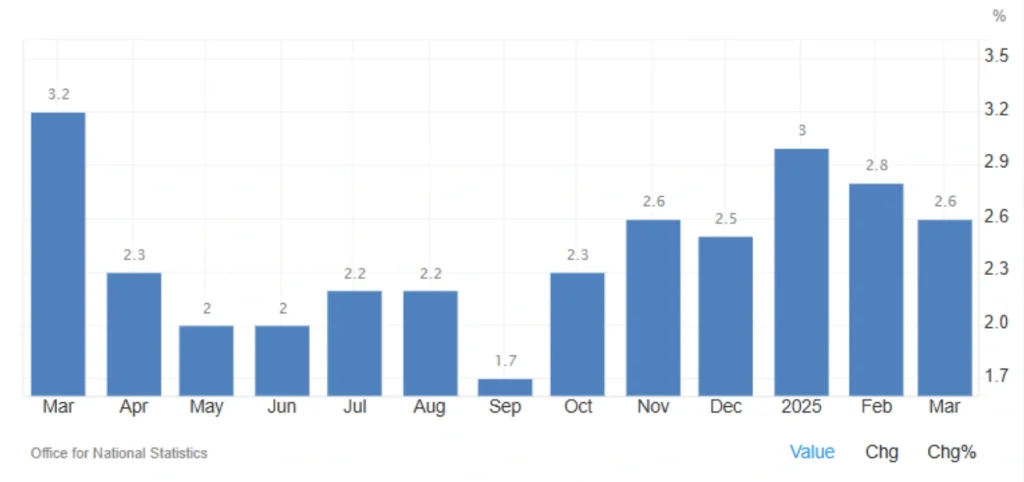
UK Inflation Eases to 2.6% in March 2025, Less Than Expected
Inflation in the UK saw a decline in March 2025, with the annual rate falling to 2.6%, down from 2.8% the previous month and better than both market expectations and the Bank of England’s (BoE) forecast of 2.7%. This reduction marks a step toward the BoE’s inflation target of 2%.
📊 Key Drivers of Inflation Drop in March:
The largest drops were seen in the games, toys, and entertainment sector (-4.2%) and data processing equipment (-5.1%), with fuel prices also falling by 5.3%.
🔺 Notable Increase:
Clothing & Footwear: Increased by 1.1%, rebounding from a 0.6% drop in February due to the arrival of spring fashions.
📈 Monthly Inflation Snapshot:
CPI month-on-month: +0.3% (compared to the predicted 0.4%)
Core Inflation (excluding food and energy): A slight decrease from 3.5% to 3.4%
Why This Matters?
Inflation is a critical indicator for monetary policy decisions, and lower-than-expected inflation typically leads to:
- Reduced pressure for interest rate hikes
- Enhanced consumer and market confidence
- Potential for moderate growth in the stock market

📘 Learn More: Why UK Inflation Rate Matters
⚠️ Challenges and Risks Ahead:
The increase in clothing prices may persist in the coming months due to seasonal changes.
Food prices and import costs remain vulnerable to supply chain fluctuations and exchange rate movements.
US trade policies could indirectly add pressure.
📊 Final Analysis: Is the Downward Inflation Trend Stabilized?
🔹 Positive Signs:
- Ongoing reduction in energy, services, and consumer goods prices
- The BoE’s target of 2% inflation appears within reach, potentially easing monetary policy pressure.
🔹 Challenges and Risks:
- Rising clothing costs may continue to impact consumer spending.
- Ongoing volatility in food prices and external trade dynamics remain a concern.
The UK’s inflation in March 2025 maintained its downward trend, and with current data, the Bank of England may take a more flexible approach in future interest rate decisions. However, the labor market and domestic consumption trends will require close monitoring for a clearer economic outlook.
Share
Hot topics

What Is the US Dollar Index (DXY) in Forex?
If you’ve spent any time exploring global markets, you’ve certainly heard about the US Dollar Index, known as DXY. For many beginner traders, it appears to be one of those...
Read more




Submit comment
Your email address will not be published. Required fields are marked *